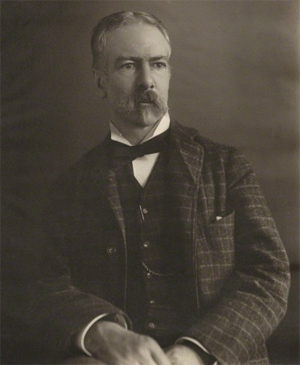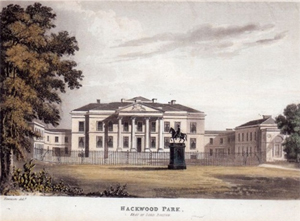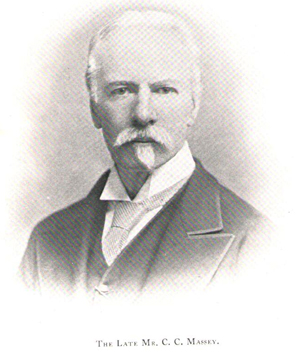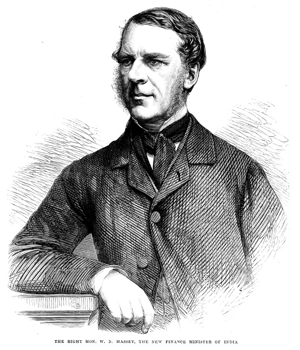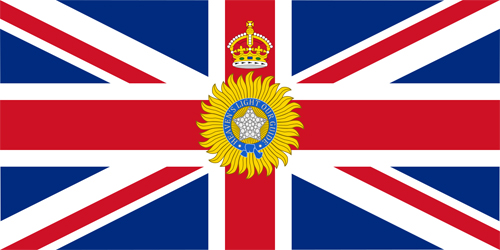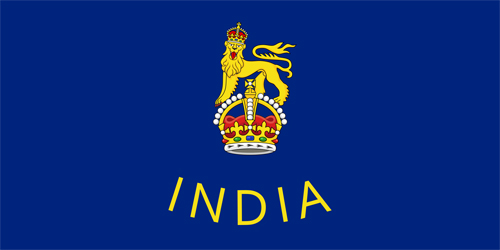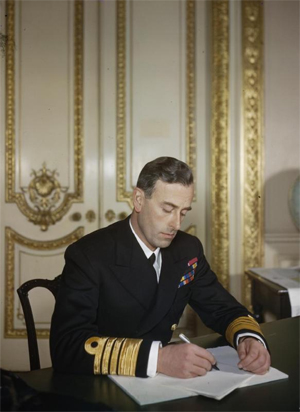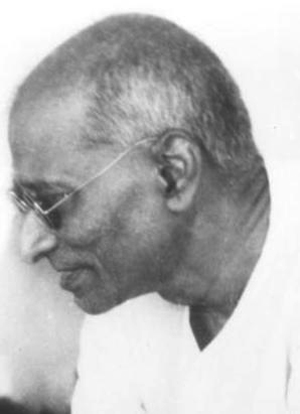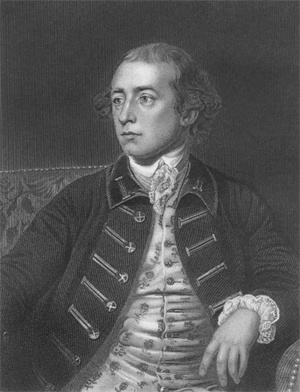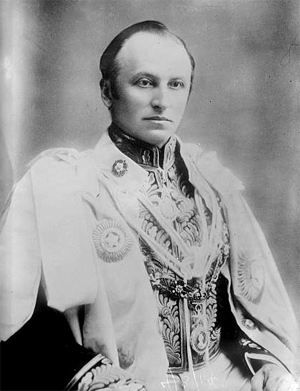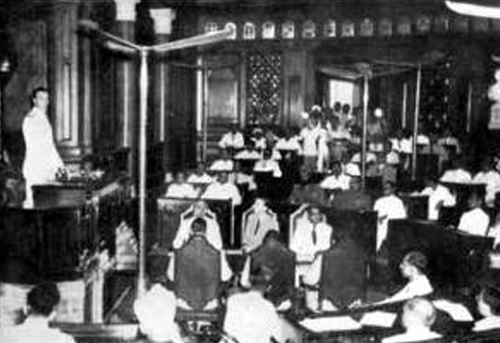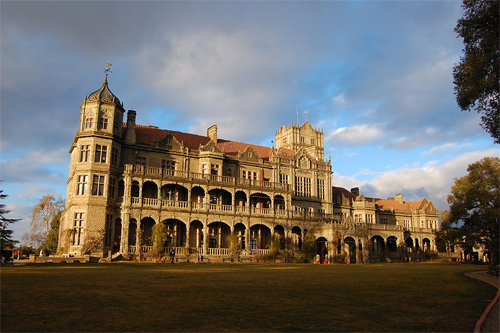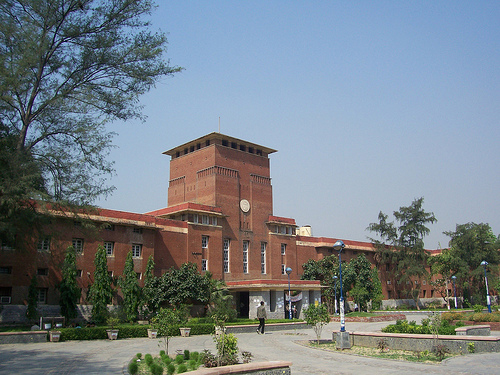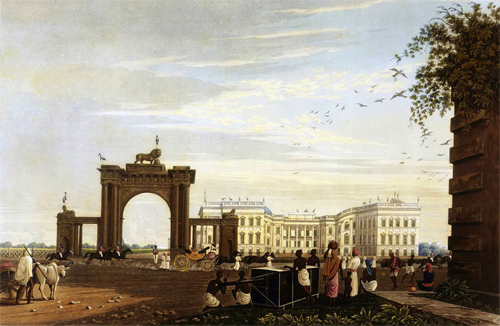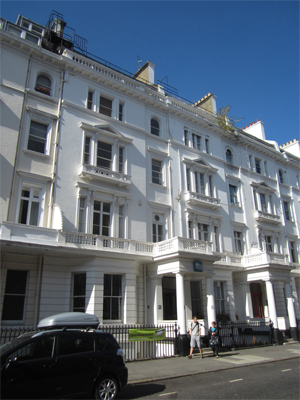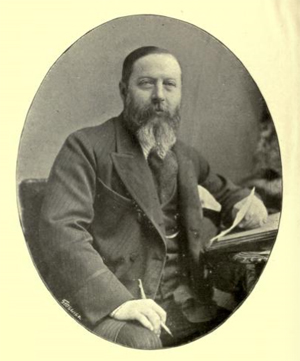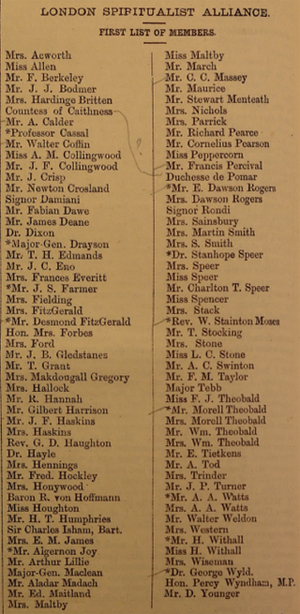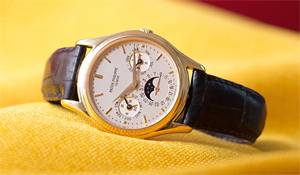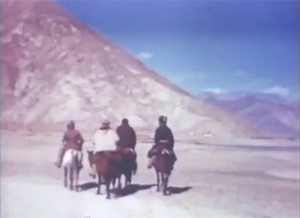by Matthew Beaumont
Victorian Review
Vol. 36, No. 1 (Spring 2010), pp. 217-232 (16 pages)
Published by: The Johns Hopkins University Press
The affinities become interesting only when they bring about divorces.
-- Goethe, Elective Affinities (1809)
In La Bas (1891), J.K. Huysman's fictional account of occultism in France at the fin de siecle, the charismatic decadent des Hermies recommends that in order "to avoid the horrors of daily life," his friend Durtal keep his eyes fixed on the pavement. "When you do that," he explains, "you see the reflections of the electric signs which assume all manner of shapes: alchemical symbols, the armoral bearings of alchemists on raised plints, cog-wheels, talismanic characters, bizarre pentacles with suns, hammers and anchors" (250). As this compendium of material and immaterial images glimpsed in the reflective gleam of the metropolitan street suggests, for des Hermies, the occult is not simply an escape from the quotidian; it is indissociable from it. Materialist and spiritualist signs are inseparable. In Oscar Wilde's play Lady Windermere's Fan (1892), Lord Darlington famously declares that "we are all in the gutter, but some of us are looking at the stars" (III. 305). Where Wilde separates the supra-mundane from the mundane, Huysmans makes them mutually implicit: des Hermies can see constellations in the gutter. In a previous chapter of La Bas, des Hermies had emphasized how the interrelationship of positivism and mysticism in contemporary Paris, apparently so incongruous, in fact typified "the tail ends of the centuries": "Magic flourishes when materialism is rife" (219).
Positivism is a philosophical theory stating that certain ("positive") knowledge is based on natural phenomena and their properties and relations. Thus, information derived from sensory experience, interpreted through reason and logic, forms the exclusive source of all certain knowledge.[1] Positivism holds that valid knowledge (certitude or truth) is found only in this a posteriori knowledge.
Verified data (positive facts) received from the senses are known as empirical evidence; thus positivism is based on empiricism.[1]
Positivism also holds that society, like the physical world, operates according to general laws. Introspective and intuitive knowledge is rejected, as are metaphysics and theology because metaphysical and theological claims cannot be verified by sense experience. Although the positivist approach has been a recurrent theme in the history of western thought,[2] the modern approach was formulated by the philosopher Auguste Comte in the early 19th century.[3] Comte argued that, much as the physical world operates according to gravity and other absolute laws, so does society.[4]
-- Positivism, by Wikipedia
In the febrile atmosphere of late-nineteenth century London, too, magic flourished alongside its old frere ennemi. It is not simply that occultism was a reaction against the increasingly discredited materialism of the nineteenth century. Their relationship was more dialectical than that. At a collective level, it was perhaps closer to what Freud called a "reaction-formation," a compensatory response that represses its complicity with the phenomenon that it constitutes as its opposite (93-94). As an exoteric movement, spiritualism had for almost half a century been infatuated with the problem of providing empirical evidence for the afterlife. In the late nineteenth century, esoteric movements such as theosophy, which self-consciously appropriated aspects of the spiritualism that it sought to displace, also sought material proof of the immaterial. If, therefore, the fin de siecle was characterized, as Terry Eagleton argues, by "a kind of mystical positivism, for which, after the endless lucubrations of high Victorian reason, that which simply, brutally, self-identically is, is the most alluring mystery of all" (15), then it was equally characterized by a kind of positivistic mysticism. The Society for Psychical Research (SPRI), founded in 1882, which consisted of skeptics and spiritualists suspended in a delicate state of intellectual tension, was one theatre in which this dialectic was publicly enacted. It contained both positivistic mystics, like Frederic Myers, and reputable scientists with a rather more agnostic interest in paranormal phenomena, like Henry Sidgwick. In the early 1880s, these factions were momentarily united by the aim of using the scientific method to investigate the immaterial and so to counteract the dispiriting effects of scientific materialism's ideological dominance.
Recently, the SPR has been exposed to scrupulous scholarship, notably by Pamela Thurschwell and Roger Luckhurst, and this has helped considerably to clarify the contradictory structure that I have briefly evoked. The relations between occultism and socialism, however, which form another significant dimension of the ideological contradictions of the fin de siecle, have been neglected (in contrast to the relations between spiritualism and feminism, which both Diana Basham and Alex Owen have examined in some detail). Thurschwell, for example, observes that "spiritualism, with its quest to form communities between the living and the dead, was an interest often shared by those who were committed to other radical reforms that aimed to stretch the boundaries, and assert the rights of other under-represented communities," but she does not elaborate the point (17). And in The Place of Enchantment (2004), Owen also marginalizes the dialogue between socialism and the occult at the fin de siecle, though she helpfully suggests that "it was considered perfectly feasible at the turn of the century to adhere to a communitarian vision and socialist principles while espousing a belief in an unseen spirit world, a cosmic mind, and Eastern religion, and many did" (25). On the other hand, historians of the socialist movement in England have traditionally underemphasized its entanglement with the occultist movement of this time. Stephen Yeo's influential account of "the religion of socialism" at the end of the nineteenth century focuses exclusively on the confluence of the labour movement with prevailing currents of non-conformist Christianity (5-56), and Logie Barrow's excellent Independent Spirits concentrates on the plebeian politics of spiritualism from 1850 rather than the bohemian politics of occultism in the 1880s and 1890s (107-08). This article makes a preliminary attempt to correct that imbalance. It traces some of the dialectical connections between socialism and occultism, particularly in its theosophical form, on the margins of metropolitan middle-class culture at the fin de siecle.
II.
It is no doubt W.B. Yeats -- whose occult fiction from the mid-1890s, collected as The Secret Rose (1897), was probably influenced by Huysmans -- who most intriguingly embodies the contradictory ideological amalgam of spiritualism and socialism in this epoch. Seamus Deane once claimed that for Yeats, fascism was the political form not so much of nationalism as occultism (24). This is convincing, but Deane's claim obscures teh fact that in the late nineteenth century, it was a socialist politics, not a proto-fascist one, that for a moment seemed compatible with his persistent interest in the poetics of the occult. In this respect, it is important to recall Elizabeth Cullingford's carefully argued insistence that "the poet's early socialism, though dismissed by most critics, had a significant and lasting influence upon his later political attitudes" (16). Cullingford, however, neglects the entanglement of Yeats's politics with his commitment to occultism. Socialism and occultism both inform Yeats's utopian nationalism in the late 1880s and 1890s. The notion of a creative brotherhood that could assume both democratic and technocratic forms was an important aspect of both movements at the time, as was the apocalyptic expectation of some fundamental social transformation on which it was often premised. It manifestly appealed to Yeats as he settled in London as a young man in the late 1880s and attempted to conceptualize his relationship as a poet both to the community that he hoped to address and to the historical process itself.1
This apocalypticism is captured in The Speckled Bird, a novel that Yeats redrafted under a series of different titles from 1896, and which he finally abandoned in 1903. Yeats's protagonist, Michael, represents a portrait of the artist as a young man. At a restaurant near the British Museum, he meets Maclagan, a character based on MacGregor Mathers, author of The Kabbalah Unveiled (1887) and the initiate who had invited Yeats to join the Hermetic Order of the Golden Dawn. "There's going to be a great change, there are going to be great disturbances," Maclagen tells Michael; "You and I shall see the streets run with blood, for no great spiritual change comes without political change too. Everything happens suddenly" (2).
And thus I went out in that night (it was the second night of the year 1914), and anxious expectation filled me. I went out to embrace the future. The path was wide and what was to come was awful. It was the enormous dying, a sea of blood. From it the new sun arose, awful and a reversal of that which we call day. We have seized the darkness and its sun will shine above us, bloody and burning like a great downfall.
-- The Red Book: Liber Novus, by C.G. Jung
Maclagan then appears to urge that if everything happens suddenly, it also happens infintesimally slowly. He hints, furthermore, that this meeting might itself precipitate the change. Calmly closing his eyes in order to commune with his masters, he iterates the point: "Yes, yes, they tell me that from this meeting will come the overthrow of whole nations, but not for a long time" (3). Maclagan subsequently takes Michael to a meeting of Spiritualists, which includes both Swedenborgians and members of the Oneida community (the utopian experiment initiated in New York by John Humphrey Noyes in 1848). He explains that he first met the people present -- all of whom, Michael is surprised to see, have "an air of middle-class commonplace" -- "either at a spiritualist society or at a society of spiritualistic anarchists" (15-16).
The association between anarchists or socialists and spiritualists was quite commonplace in London from the second half of the 1880s, especially in bohemian communities like Bedford Park, the suburb near Turnham Green inhabited by Yeats and his family from 1887 to 1889. Both groups participated in a common spirit of vanguardism and apocalypticism. G.J. Watson has pointed out that Yeats "had absorbed from Madame Blavatsky's Secret Doctrine the idea of the imminence of a new epoch to be ushered in by a Messiah figure, and inaugurated with revolutionary violence and war," and has underlined that this idea was part of "the emotional make-up" of the Fenian movement too. "Thus, mysticism and revolutionary dreams could be married most happily," he concludes (92). It should be added, though, that this idea was also part of the emotional makeup of the revolutionary socialist movement, for whom the messianic role was played less by a single prophetic figure than by the proletariat or those intellectuals that appointed themselves to represent it. In other words, Yeats absorbed this utopianism from William Morris's lectures and pamphlets too, which he cited in Autobiographies as the reason for his briefly "having turned Socialist" (146).
The two formative influences on Yeats when he moved to London in his early twenties were indeed William Morris and Helena Petrovna Blavatsky. In the first draft of his autobiography, Yeats wrote,
Madame Blavatsky herself had as much of my admiration as William Morris, and I admired them for the same reason. They had more human nature than anybody else; they at least were unforeseen, illogical, incomprehensible. Perhaps I escaped when I was near them from the restlessness of my own mind. (Memoirs 24)
In the summer of 1887, Yeats sat at the feet of both of these idols, dining with Morris at his house in Hammersmith, the home of the Socialist League, and attending Blavatsky at the Theosophical Society's headquarters in Holland Park. Morris and Blavatsky, both larger-than-life characters, make a peculiar, almost comic, couple. They nonetheless had a number of acquaintances in common and were almost exact contemporaries of one another (Blavatsky, 1831-91; Morris, 1834-96). Moreover, in spite of her skepticism about political reform, which she claimed was pointless before spiritual reform had taken place, Blavatsky was sympathetic to a number of socialists, and in The Key to Theosophy (1889), she praised both Christ and the Buddha for "preaching most unmistakably Socialism" (79). Morris, odd as it might sound, supposedly attended a seance on one occasion; and in Morris's personal and political circles, as Tony Pinkney has pointed out, there was a noticeable interest in seances and spiritualism.2 They occupy countervailing sides of the philosophical divide between idealism and materialism that shapes late-Victorian society; but they are at the same time connected by a serpentine continuity, like the opposing surfaces of a Möbius strip. They were both at the centre of important constellations in the cosmos of what Janet Oppenheim has characterized as the late-Victorian ‘counterculture’ (162).
At the fin de siècle Yeats passed like a meteor through the points of contact between these constellations. Before moving to London he had been chairman of the Dublin Hermetic Society, founded in 1885 and renamed the Dublin Theosophical Society in 1886. In December 1888 he joined the Esoteric Section of the Theosophical Society. Blavatsky, who served as the model for Mrs. Allingham in The Speckled Bird, had co-founded the Theosophical Society with Henry Steel Olcott in 1875. She was a Ukrainian aristocrat who had drifted to the United States in the 1870s, when the influence of the older spiritualist movement was fading there. In 1877, she published Isis Unveiled, which she claimed had been dictated to her by Tibetan Mahatmas. It advertised itself as a vast repository of all those ancient occultist insights inaccessible to contemporary, positivistic science; and it cleverly used an evolutionary discourse derived from Darwin to seem up-to-date. Isis Unveiled consequently became highly influential, not least among disillusioned christians. ‘It is a daring piece of intellectual gambling,’ wrote Beatrice Webb: ‘the “Ancient Wisdom” twisted with amazing logical skill to fit all modern problems of life’ (322).
At the same time Blavatsky proved herself adept at producing psychic phenomena – or concealing their mechanics – in elaborate séances that revived the reputation of spiritualism. These were exposed as fraudulent by a member of the SPR called Richard Hodgson in 1885. Thereafter, in self-imposed exile in London, where she set up the Blavatsky Lodge in 1887, Blavatsky nonetheless continued to conduct spiritualist rituals, including séances with the dead (though she cannily insisted that the emanations were less the spirits of the deceased than shadowy doubles). It was at this moment that Yeats made her acquaintance. In ‘The Trembling of the Veil’ (1922), he depicted her as ‘a great passionate nature, a sort of female Dr. Johnson, impressive I think to every man or woman who had themselves any richness’ (Autobiography 153). They did not appear to be fully compatible though. Yeats disaffiliated from the theosophists in October 1890, following her pointed request that he resign – though it seems to have been a relief to him. He hoped to pursue his interests in the occult, under the tutelage of Mathers, in slightly less authoritarian conditions than those over which Blavatsky presided. He continued, though, to retain respect for Blavatsky, and even defended her against claims that she was fraudulent. He praised her in his Memoirs for being ‘unfanatic’, and for displaying ‘a mind that seemed to pass all others in her honesty’ (24).
The ‘awkward mishmash of dogmas’ assembled in Isis Unveiled and its sequel, The Secret Doctrine (1888), as Frederick Crews has noted, ‘would not have troubled even the chronically credulous if HPB hadn’t kept them marveling at her paranormal demonstrations’ (26). And, it might be added, her abnormally colourful character. Blavatsky’s highly performative personality cannot be abstracted from theosophy’s cultural impact at the fin de siècle. Her physical appearance, which comprised an important part of her appeal, was distinctly impressive. The American sceptic Henry Ridgely Evans offered this description in his Hours with the Ghosts or Nineteenth Century Witchcraft (1897):
In appearance she was enormously fat, had a harsh, disagreeable voice, and a violent temper, dressed in a slovenly manner, usually in loose wrappers, smoked cigarettes incessantly, and cared little or nothing for the conventionalities of life. But in spite of all – unprepossessing appearance and gross habits – she exercised a powerful personal magnetism over those who came in contact with her. She was the sphinx of the second half of the nineteenth century; a Pythoness in tinsel robes who strutted across the world’s stage ‘full of sound and fury,’ and disappeared from view behind the dark veil of Isis, which she, the fin de siècle prophetess, tried to draw aside during her earthly career. (213-14)
The rhetoric here – note that Evans repeats himself, emphasizing her ‘unprepossessing appearance and gross habits’, in order to underline his patently misogynistic sense of disgust – is typical of attacks on feminists in the 1880s and 1890s. Blavatsky is both repulsive and seductive, sexless and insidiously sexed. One the one hand she is an Occult Mother: significantly, and despite her aristocratic background, many contemporaneous portraits referred to her ‘peasant’ features (Yeats recalled an occasion on which she puffed herself up and became ‘all primeval peasant’ (Autobiography 153)). On the other hand she is a New Woman: contemporaneous portraits were equally obsessed with the fact that, like some monstrous bohemian, she dressed eccentrically, chain-smoked cigarettes, and laced her speech with expletives. This ‘fin-de siècle prophetess’ appeared to incarnate both ancient and modern female archetypes.
After arriving in London, and at the precise time that he was identified with Blavatsky’s theosophists, Yeats also briefly ‘adopted Morrisite communism’, as R.F. Foster authoritatively puts it (64). He frequently attended the meetings of the Socialist League, formed by Morris and Eleanor Marx in 1885 after splitting from the Social Democratic Federation. And he ardently venerated Morris himself, whom he semi-deified as his ‘chief of men’ (Autobiography 123). In the same retrospective, Yeats nonetheless confessed that he became a less committed socialist as the months passed, principally because he disapproved of the attacks on religion made by working-class activists at political meetings. He offered a detailed description of one particular discussion, after a lecture in Hammersmith, at which he had angrily rejected the Socialist League’s position on religious matters: ‘What was the use of talking about some new revolution putting all things right, when the change must come, if come it did, with astronomical slowness, like the cooling of the sun, or it may have been like the drying of the moon?’ (130). After this incident Yeats never returned to the headquarters of the League. His thought was nonetheless imprinted by socialism as well as spiritualism at this time. After all, many socialists, including the Fabians, also imagined an almost infinitesimally gradual process of social transformation. Certainly, in drafting his autobiography, he was conscious of the underlying affinities between these different ideologies. ‘Like the Socialists,’ he observed, the theosophists ‘thought little of those who did not share their belief, and talked much of what they called Materialism’ (Memoirs 21). In spite of the tone of this sentence, it can be assumed that, in addition to the charismatic personalities of Blavatsky and Morris, it was precisely this doctrinaire quality that attracted Yeats to the movements that they embodied. Like the socialists, occultists such as the theosophists were vanguardists who imagined themselves at the forefront of fundamental historical change.
In ‘The Happiest of the Poets’ (1902), Yeats described Morris as ‘among the greatest of those who prepare the last reconciliation when the Cross shall blossom with roses’ – effectively ‘rosicrucianising’ him (Selected Criticism 126). Morris thus acquired a crypto-spiritual importance for Yeats, as for other aesthetes and socialists of his generation, perhaps especially for displaced Irish Protestants like Shaw, Wilde and Yeats. Madame Blavatsky, for her part, acquired a crypto-political importance in fin-de-siècle London. As Oppenheim insists, ‘in the ferment of ideas and movements that animated the closing decades of the nineteenth century and the opening years of the twentieth, it was possible to perceive Theosophy as part of a vast liberation movement designed to topple the materialistic, patriarchal, capitalistic, and utterly philistine culture of the Victorian Age’ (183).
III
Spiritual and political forms of utopianism are intimately related in the 1880s and 1890s, as Maclagan indicates in The Speckled Bird when he tells Michael that ‘no great spiritual change comes without political change too’. The fin de siècle was at the same time a period of spiritual and political optimism and one characterized by pessimism caused by the fact that the fulfilment of hopes was constantly deferred. A spirit of apocalypticism performed a compensatory function for those, like the socialists and the theosophists, who were expectantly waiting for proof of a political and spiritual transformation, and who were disappointed by the unpunctuality of history. Utopian promise always becomes especially important when the opportunity to implement real social change starts to seem more remote. Parousiamania – excitement at some forthcoming messianic event – is a symptom of disappointment as well as hope (see Beaumont 11-30).
This was the ambiguous climate in which ‘ten thousand fungoid cults’, as the naturalist W.H. Hudson phrased it, ‘sprung up and flourished exceedingly in the muddy marsh of man’s intellect’ (265). Unofficial culture was itself a kind of muddy marsh at the fin de siècle, one in which positivists and anti-vivisectionists, socialists and theosophists, freely cross-fertilized in an inchoate search for meaning amidst the confusion of modern life. In 1891, Morris’s friend Ernest Belfort Bax, one of the Socialist League’s most important ideologues, fulminated against the ‘mephitic social atmosphere’ in which these ideologies flourished alongside his austere brand of scientific socialism. But, like others in the profusive movement for social reform, he identified it as an effect of ‘the rank overgrowth of an effete civilization’, and hence, paradoxically, as proof of the fertility of history, its ripe readiness to produce some more virile alternative (x). The syncretistic quality of this climate is evoked, in a tone of faintly comic gravity, in a description of a meeting of the Liverpool branch of the Land Nationalization Society of 1891:
There were present Socialists, Trade Unionists, Co-operationists, Anti-Co-operationists, Good Templars, Theosophists, gentleman holding important positions under government, [and] Traders, thus making in all a very sound representative meeting. (‘An Echo’ 126)
In the last decades of the nineteenth century, then, a confluence of the languages of socialism and theosophy can be detected in the utopian discourse thriving on the bohemian margins of the British middle classes. This distinctively fin-de-siècle phenomenon reinforces an older association, one characteristic of plebeian rather than bohemian culture, between spiritualist movements and secular forms of radicalism. For in the 1850s, spiritualism had been tainted by its association with radical reformist causes like feminism, socialism and the movement for free love. It was after all in 1853 that the octogenarian utopian socialist Robert Owen, whose prodigious political energies had been exhausted by the failure of a number of colonial experiments that had collapsed in scandal, converted to spiritualism. One of his biographers notes with perceptible disgust that ‘thereafter spiritualist phenomena became inextricably mingled in his mind with his moral and social doctrines’ (307). Spiritual fantasies thus functioned, in the aftermath of the Chartist movement, as a consolation for political defeat. And if in the case of Robert Owen, a man of immense political importance, this displacement was ultimately tragic, then in the case of his son, Robert Dale Owen, it was sadly farcical. The latter became besotted with the mysterious spirit known as ‘Katie King’, the cause célèbre of spiritualist culture in the 1870s. Seduced by her lissom form, he bought her jewellery that, predictably enough, dematerialized and then failed to rematerialize. When ‘Katie’ was exposed as Mrs. Eliza White, the accomplice of the medium Jennie Holmes, he was devastated. His retreat from the movement, as Basham notes, ‘signalled the end of another relationship, considerably weakening the ties which had, throughout the nineteenth century, existed between occultism and radical politics’ (184).
These ties were however forged again some ten or fifteen years later. In a ‘spiritualist romance’ of 1884, for example, W.J. Colville symptomatically hailed Owen and his son as ‘earnest Spiritualists’ and ‘also Communists’ as well as ‘sincere admirers of those sublime New Testament ethics’ (292). This convergence of political and spiritual currents is typical of the late nineteenth-century counterculture. For emblematic purposes, a single dramatic incident can be taken in illustration. At the funeral of Alfred Linnell – the young man killed by the police on ‘Bloody Sunday’ (13 November 1887) during a demonstration against the treatment in prison of an Irish M.P. – a group of celebrated radicals led the procession. In the years that followed they drifted to the edges of each other’s political orbits; but for the moment they were held in a fragile equilibrium. Marching in front of the coffin was the Reverend Stewart Headlam, committed to conjoining socialism and sacramentarianism (he represented ‘sublime New Testament ethics’, in Colville’s phrase). The pall-bearers included William Morris, who remained a communist; William Stead, the editor of the Review of Reviews, who became an ‘earnest Spiritualist’; Herbert Burrows, a Fabian who subsequently joined the Theosophical Society; and, most significantly, Annie Besant, another Fabian who, in the space of little more than a year, after triumphantly leading the Match Girls’ Strike in 1888, also converted to theosophy.
Headlam, whose example is itself revealing in this context, was the pioneer of the movement to use socialism to secularize Church discourse in the late nineteenth century, in order to make it more amenable to working-class people. He regarded the gospels as socialist texts, and referred to Christ as a kind of socialistic carpenter. Headlam’s social work, according to Lynne Hapgood, was the practical equivalent of ‘his vision of a dynamic language that would resolve the duality of materialism and spirituality’ (191). This linguistic experiment, however, only weakened both socialist and christian discourse, so that socialism’s ‘material definitiveness became leavened with metaphor’: ‘the social and economic concepts embodied in terms such as “brotherhood”, “communism” and “socialism” were transmuted into metaphysical terms which underpinned a moral landscape into which material facts such as “labour”, “property” and “capital” were transplanted’ (198-9). Hapgood is right to note this spiritualization of the language of socialism; but she fails to convey the wider context in which the process was taking place. Almost as influential as the social wing of the Church in effecting these discursive shifts was the growing popularity of occultism, and in particular theosophy. It too effected a dematerialization of socialist discourse.
Historians have tended to interpret the explosive popularity of the theosophical movement as a response to the two great crises of bourgeois thought at the turn of the century, the spiritual impasse of official religion and the intellectual impasse of positivistic science. Oppenheim notes for example that spiritualism and psychical research ‘served as substitute religions for refugees from Christianity in the late nineteenth and early twentieth century’, at a time when ‘triumphant positivism sparked an international reaction against its restrictive world view’ (159-60). These factors undoubtedly played a determining role in the flight to the occult. In addition, I contend, theosophy offered an escape from the political impasse of the movement for social reform at this time. In the late 1880s and in the 1890s, socialists could not confidently anticipate an imminent transformation of society. In its emphasis, in particular, on the evolution of a ‘Universal Brotherhood’, a utopian concept at once both gradualistic and messianic, democratic and elitist, theosophy made a powerful appeal to disillusioned social reformists.
In 1889, Annie Besant read a copy of Blavatsky’s The Secret Doctrine sent by a scornful George Bernard Shaw on behalf of her friend Stead. ‘The light had been seen’, she said of this epiphanic incident in her Autobiography (1893), ‘and in that flash of illumination I knew that the weary search was over and the very Truth was found’ (340). Meeting Blavatsky soon after this serendipitous event, Besant felt herself magnetically attracted to the theosophist’s teachings. She laid out the tenets of Theosophy shortly after in Why I Became A Theosophist (1889). There are three (of which the first is the most important because the others are premised on it):
i) to be the nucleus of a Universal Brotherhood
ii) to promote the study of Aryan and other Eastern literatures, religions, sciences
iii) to investigate unexplained laws of nature and the psychical powers latent in man (14)
This idea of a far-distant Brotherhood neatly fitted the politics of the most successful blueprint of the future produced at this time, Looking Backward, 2000-1887 (1888), a utopian romance by the American socialist Edward Bellamy. In an article on ‘Industry under Socialism’ (1889), Besant praised Bellamy as ‘the ingenious author of “Looking Backward, from A.D. 2000”’ (160). Bellamy’s novel, the most influential socialist publication of the late nineteenth century, sold two hundred thousand copies in the United States during its first year in print; by 1891 it had sold some one hundred thousand copies in England too. Bellamy’s vision of America at the turn of the twenty-first century is state socialist or, to use his unfortunate term, Nationalist. The entire economy has been nationalized and the government acts as the sole monopolistic corporation. The people comprise an ‘industrial army’, one fraternally rather than hierarchically organised (see Bellamy). It is a vision that, in Britain, the Fabians found especially appealing, in part because of its emphasis on a gradual, peaceful evolution to socialism.
Almost from the moment of its publication, Bellamy’s novel spawned a political movement, in Europe and the United States, to which the theosophists were absolutely central. Theosophists for example helped found the first Nationalist Club designed to advance the ideas set out in the book. Indeed, with the exception of Bellamy himself, the entire committee appointed to draft the movement’s founding statement of principles came from the Theosophical Society. Theosophists similarly dominated the pages of the organization’s journal, the Nationalist, from which Bellamy eventually felt driven to set up his own paper, the New Nation, in 1891. But if theosophists quickly insinuated themselves into the Nationalist clubs, Nationalist ideas rapidly infiltrated theosophical thought too. Cyrus Willard, who was prominent in both orders, commented that there was a widely-held belief ‘that Nationalism was but the working out of the doctrines of human brotherhood as taught by Madame Blavatsky’ (cited in Morgan 264). Blavatsky herself hymned Bellamy’s novel in The Key to Theosophy, praising it for ‘admirably represent[ing] the theosophical idea of what should be the first great step towards the full realization of universal brotherhood’ (44). She also pointed to the ideological significance of the theosophists’ involvement in the Nationalist movement:
In the constitution of all their clubs, and of the party they are forming, the influence of Theosophy and of the Society is plain, for they take as their basis, their first and fundamental principle, the Brotherhood of Humanity as taught by Theosophy. (44)
Elsewhere in this book, Blavatsky conveniently insisted that Theosophists need not be involved in politics themselves, for she was convinced that, if spiritual self-education remains the primary concern of reformists, corrupt laws will simply collapse. This was however consistent with the emphasis on intellectual and moral transformation that shaped almost every variant of socialism at this time, particularly Fabianism.
As editor of the journal Lucifer, Blavatsky shrewdly encouraged commerce between theosophy and socialism, sponsoring an extended dialogue between an authoritative theosophist and ‘a Socialist Student of Theosophy’ in 1887 and 1888. Furthermore, in a series of articles on ‘Theosophy and Modern Socialism’ (1888), J. Brailsford Bright argued that, like theosophy, socialism ‘creates such bonds of spiritual intimacy between its disciples as demand warmer and closer terms like “brotherhood”, “comradeship”, and “solidarity”’. He continued: ‘Socialism, when completely grasped, rises in the heart of its disciples to the rank of a religion, and thus justifies the half-mystic naturalism of some of its poetry and oratory’ (229). It was precisely this ‘half-mystic’ quality that registered the dematerialization of socialist discourse. But in thus establishing a dialogue between socialist and theosophical ideas the Society effectively prepared itself to accommodate Besant. For by the late 1880s she was finding it necessary to supplement socialism’s ‘material definitiveness’, in Hapgood’s terms, with spiritual meaning. It is symptomatic of a creeping disillusionment with the embattled labour movement. ‘The socialist position sufficed on the economic side,’ she wrote, ‘but where to gain the inspiration, the motive, which should lead to the realisation of the Brotherhood of Man?’ (Autobiography 338). In the manner of the supplement, which subtracts from that to which it is added, spiritualism came to substitute for socialism.
In her Autobiography Besant transcribed a passage that she had originally composed in the aftermath of Bloody Sunday, when she was developing an interest in clairvoyance, hypnotism and the paranormal. It evokes a less obviously socialistic sort of utopianism:
Lately there has been a dawning on the minds of men far apart in questions of theology, the idea of founding a new Brotherhood, in which service of man should take the place erstwhile given to service of God – a brotherhood in which work should be worship and love should be baptism, in which none should be regarded as alien who was willing to work for human good. (329)
She quoted this sentence, she said, in order to illustrate ‘how unconsciously I was marching towards the Theosophy which was to become the glory of my life’ (330). But if Besant’s tone seems increasingly elevated and abstracted, it nonetheless remains residually imbricated in the grittily material – the need for a Brotherhood arises from the turmoil, stress and social injustice of life under a competitive, exploitative system. For the theosophist, indeed, spirit and matter are finally indissociable: the latter is the impure ‘crystallization’ of the former, as she avers in Why I Became a Theosophist, even as Bellamy’s Nationalism is a provisional embodiment of the evolving Brotherhood (18). Mysticism springs from empirical experience; and the political is spiritualized. Theosophy, Besant claimed, furnished her with ‘the material for the nobler Social Order’, ‘the hewn stones for the building of the Temple of Man’ (Autobiography 339). As her diction here indicates, this embodies Besant’s vision of a language that, like Headlam’s, might resolve the conflict between the material and the spiritual. But the ‘material definitiveness’ of Socialism is manifestly displaced and weakened by the pseudo-materialist rhetoric of Spiritualism.
Feeling some qualms about her abrupt flight to the transcendental in 1889, Besant wondered how her old friend Charles Bradlaugh, the leading figure in the National Secular Society, would react to her ‘go[ing] over to the opposing hosts, and leav[ing] the ranks of materialism’ (Autobiography 341). In fact, her secularist principles remained comparatively unruffled in the immediate aftermath of her conversion. As she insisted when enumerating the three central tenets of theosophy: ‘Not a word of any form of belief’ (Why 14). In fact, Besant remained in the Fabian Society until November 1890, fully eighteen months after she had joined the Theosophical Society. Theosophy’s emphasis on intellectual enquiry, and the enlightenment it prepares, no doubt helps to explain the ease with which she reconciled her relationship to socialism. But it is surely the utopian concept of a Universal Brotherhood that accounts for the fact that Besant’s socialist beliefs were preserved – mummified perhaps – in her Theosophical faith.
IV
In his history of Modern Spiritualism (1902), Frank Podmore, a founding member of the SPR, noted that ‘there appears to be some natural affinity between Socialism of a certain type and Spiritualism’ (209). Spiritualism and a certain type of socialism, utopian socialism, are undoubtedly related in the mid-nineteenth century. As I have tried to demonstrate, socialism and spiritualism of a certain type are also interlinked at the end of the nineteenth century, when the theosophical and and reformist socialist movements appear to overlap. The affinity is not however ‘natural’ so much as cultural. I therefore want to conclude by insisting that there is an elective affinity between spiritualism and socialism at the fin de siècle (in 1875 T. De Witt Talmage complained that spiritualism ‘talks about “elective affinities,” and “spiritual matches”’ (10)).
The term ‘elective affinity’ (Wahlverwandtschaft) first appears in German in the late eighteenth century, when it is used to translate the phrase attractio electiva, a formulation devised by the Swedish chemist Torborn Bergman to summarize the laws of association between elements (see Howe 366-85). Deliberately transmuted by Goethe, who used it as a metaphor for social relations in Elective Affinities (1809), it was subsequently reconceptualized by Max Weber in order to explain the correlations between religious belief and ethical practice in The Protestant Ethic and the Spirit of Capitalism (1905). In the present context, I use it in the sense developed by Michael Löwy in his book on Jewish libertarian thought in the late-nineteenth and twentieth centuries:
By ‘elective affinity’ I mean a very special kind of dialectical relationship that develops between two social or cultural configurations, one that cannot be reduced to direct causality or to ‘influences’ in the traditional sense. Starting from a certain structural analogy, the relationship consists of a convergence, a mutual attraction, an active confluence, a combination that can go as far as a fusion. (6)
This definition perfectly captures the shifting relationship between socialism and occultism in the 1880s and 1890s.
The three fundamental correlatives that constitute this elective affinity can be outlined as follows. First, both socialism and theosophy placed considerable emphasis on the utopian concept of a Universal Brotherhood, as I have indicated above. It only needs to be added that the obverse of this democratic fraternity in the future was a meritocratic elite in the present. Theosophy’s first injunction – ‘to be the nucleus of a Universal Brotherhood’ – made this manifest. The theosophists of the late nineteenth century were a spiritual aristocracy; the politics of the Fabians, who effectively constituted themselves as a technocratic elect, were likewise essentially elitist. Second, both reformist socialists and theosophists interpreted history as an evolutionary process. This evolutionism, paradoxically, was often articulated in an apocalyptic rhetoric (typical of the Fabians, for all their gradualism, as of Blavatsky’s acolytes). Third, both movements adopted a crypto-positivistic attitude to the present, pointing to themselves as evidence of the inevitability of the alternative future of which they dreamed. In a historical perspective that was at once progressivist and millenarian, the existence of a vanguard like the theosophists or the Fabians was ipso facto adduced as proof that utopian hopes would materialize. These are the dialectics of socialism and occultism at the fin de siècle.
Löwy observes that ‘elective affinity occurs neither in a vacuum nor the azure of pure spirituality; it is encouraged (or discouraged) by historical and social conditions’(12). In his attempt to explain the ‘natural affinity’ that he identified between spiritualism and socialism, Podmore made the mistake of assuming that it might occur in a historical and social vacuum. He pointed out that ‘the vision of a new heaven will perhaps be most gladly received by those whose eyes have been opened to the vision of a new earth’ (209). Podmore was correct implicitly to categorize both movements as utopian, but his explanation did not penetrate deeply enough. It might be the case that ‘the vision of a new heaven will be most gladly received by those whose eyes have been opened to the vision of a new earth’, but only under peculiar circumstances that he omitted to characterize. In a historical situation in which utopian hopes of some imminent change have been raised only to be disappointed, the vision of a new heaven comes to occupy the space previously inhabited by the vision of a new earth. In the late 1880s and the 1890s, it became apparent that capitalism was not on the point of evolving peacefully, and in the foreseeable future, into a new species of society. Capitalism was more robust than many commentators had expected. Maclagan’s claim that ‘everything happens suddenly’, as Yeats’s tone perhaps implies, was finally a wish-fulfilment fantasy. Instead, the change seemed likely to come with astronomical slowness, like the drying of the sun. For those who staked their hopes for future social development on an evolutionary process rather than a revolutionary one – for those, in other words, expecting capitalism to do the work for them – this problem was potentially very dispiriting.
The elective affinity between socialism and occultism is at its most intimate when the former enters into a crisis of confidence. At that point, if occultism starts to exhibit a social conscience, and if its concepts are politicized, socialism, concomitantly, starts to exhibit a religious one, and its concepts are depoliticized. The utopian fantasies of socialists, under these circumstances, seem uncomfortably close to what Theodor Adorno, in his ‘Theses against Occultism’ (1947), castigated as ‘the asocial twilight phenomena in the margins of the system, the pathetic attempts to squint through the chinks in its walls’(129). But in the mid-1930s, a friend of Adorno’s, the philosopher Ernst Bloch, had bravely recognised that the contemporary fascination for what he called ‘occult spookiness’ could not simply be dismissed as the ‘fascistization of the bourgeoisie’, because it contained a utopian as well as an ideological content (171). The occult can be shaped by the hope of active social transformation as well as the despondent dream of passively escaping society altogether. The affinities between occultism and socialism throughout the 1880s and 1890s, as exemplified above all in Annie Besant, testify to the complex interrelationship of the utopian and ideological aspects of occult spookiness.
_______________
Notes
[1] Marjorie Howes, in an excellent book centred on Yeats’s nationalism, argues that he used the occult in order to negotiate his relations to the public sphere; but she fails to consider the role that his interest in socialism might have played in this process of engagement: ‘In theory and in practice, the occult offered him a way of organizing his thoughts about groups: the sources and structures of more and less desirable forms of collectivity, the attractions and dangers of the kind of subject required or created by them, the theatrical (and more generally poetic) techniques and spectacles most likely to foster them, and the intersubjective relationships among members of a group and between leaders and followers’ (84).
[2] I am grateful to Tony Pinkney for letting me read his fine unpublished paper, ‘News from Nowhere as Séance Fiction.’ I am also grateful to the anonymous referees commissioned by Victorian Review for their comments on a previous draft of this article.
Works Cited
Adorno, Theodor W. Adorno: The Stars Down to Earth and Other Essays on the Irrational in Culture. Ed. Stephen Crook. London: Routledge, 1994.
‘An Echo from the Mersey.’ Nationalization News 1 (1 November, 1891): 126.
Barrow, Logie. Independent Spirits: Spiritualism and English Plebeians, 1850-1910. London: Routledge & Kegan Paul, 1986.
Basham, Diana. The Trial of Woman: Feminism and the Occult Sciences in Victorian Literature and Society. London: Macmillan, 1992.
Bax, E. Belfort. Outlooks from the New Standpoint. London: Swan Sonnenschein, 1891.
Beaumont, Matthew. Utopia Ltd.: Ideologies of Social Dreaming in England 1870-1900. Leiden: Brill, 2005.
Bellamy, Edward. Looking Backward, 2000-1887. Ed. Matthew Beaumont. Oxford: Oxford World’s Classics, 2007.
Besant, Annie. ‘Industry under Socialism.’ Fabian Essays in Socialism. Ed. G. Bernard Shaw. London: Fabian Society, 1889: 150-69.
Besant, Annie. Why I Became a Theosophist. London: Freethought Publishing, 1889.
Besant, Annie. An Autobiography. London: T. Fisher Unwin, 1893.
Blavatsky, H.P. The Key to Theosophy: Being a Clear Exposition in the Form of Question and Answer of the Ethics, Science and Philosophy for the Study of which the Theosophical Society has been Founded. London: Theosophical Publishing House, 1889.
Bloch, Ernst. Heritage of Our Times. Trans. Neville and Stephen Plaice. Cambridge: Polity, 1991.
Bright, J. Brailsford. ‘Theosophy and Modern Socialism.’ Lucifer 2:9 (15 May, 1888): 227-33.
Cole, G.D.H. The Life of Robert Owen. 3rd edition. London: Frank Cass, 1965.
Colville, W.J. Bertha: A Romance of Easter-Tide. London: J. Burns, 1884.
Crews, Frederick. ‘The Consolation of Theosophy.’ New York Review of Books (19 September, 1996): 26-30.
Cullingford, Elizabeth. Yeats, Ireland and Fascism. London: Macmillan, 1981.
Deane, Seamus. ‘Blueshirt.’ London Review of Books 3: 10 (4 June, 1981): 23-4.
Eagleton, Terry. ‘The Flight to the Real.’ Cultural Politics at the Fin de Siècle. Ed. Sally Ledger and Scott McCracken. Cambridge: Cambridge University Press, 1995: 11-21.
Evans, Henry Ridgeley. Hours with the Ghosts or Nineteenth-Century Witchcraft: Illustrated Investigation into the Phenomena of Spiritualism and Theosophy. London: Laird & Lee, 1897.
Fixler, Michael. ‘The Affinities between J.-K. Huysmans and the “Rosicrucian” Stories of W.B. Yeats.’ PMLA 74: 4 (September 1959): 464-9.
Foster, R.F. W.B. Yeats: A Life. Vol. 1. Oxford: Oxford University Press, 1998.
Freud, Sigmund. Three Essays on the Theory of Sexuality and Other Works. The Pelican Freud Library, Vol. 7. Ed. Angela Richards. Harmondsworth: Penguin, 1977.
Hapgood, Lynne. ‘Urban Utopias: Socialism, Religion and the City, 1880 to 1900.’ Cultural Politics at the Fin de Siècle. Ed. Sally Ledger and Scott McCracken. Cambridge: Cambridge University Press, 1995: 184-201.
Howe, Richard Herbert. ‘Max Weber’s Elective Affinities: Sociology within the Bounds of Pure Reason.’ American Journal of Sociology 84:2 (September, 1978): 366-85.
Howes, Marjorie. Yeats’s Nation: Gender, Class, and Irishness. Cambridge: Cambridge University Press, 1996.
Hudson, W.H. A Crystal Age. London: Fisher Unwin, 1887.
Huysmans, Joris-Karl. The Damned. Trans. Terry Hale. Harmondsworth : Penguin, 2001.
Löwy, Michael. Redemption and Utopia: Jewish Libertarian Thought in Central Europe. Trans. Hope Heaney. London: Continnum, 1992.
Luckhurst, Roger. The Invention of Telepathy, 1870-1901. Oxford: Oxford University Press, 2002.
Morgan, Arthur E. Edward Bellamy. New York: Columbia University Press, 1944.
Oppenheim, Janet. The Other World: Spiritualism and Psychical Research in England, 1850-1914. Cambridge: Cambridge University Press, 1985.
Owen, Alex. The Darkened Room: Women, Power and Spiritualism in Late Victorian England. Philadelphia: University of Pennsylvania Press, 1990.
Owen, Alex. The Place of Enchantment: British Occultism and the Culture of the Modern. Chicago: University of Chicago Press, 2004.
Podmore, Frank. Modern Spiritualism: A History and a Criticism. Vol. 1. London: Methuen, 1902.
Talmage, T. De Witt. The Religion of Ghosts, A Denunciation of Spiritualism. London: Longley, [1875].
Thurschwell, Pamela. Literature, Technology and Magical Thinking, 1880-1920. Cambridge: Cambridge University Press, 2001.
Watson, G.J. Irish Identity and the Literary Revival: Synge, Yeats, Joyce and O’Casey. London: Croom Helm, 1979.
Webb, Beatrice. The Diary of Beatrice Webb. Vol. 2. Ed. Norman and Jeanne Mackenzie. London: Virago, 1983.
Wilde, Oscar. Oscar Wilde (The Oxford Authors). Ed. Isobel Murray. Oxford: Oxford University Press, 1989.
Yeats, W.B. The Autobiography of W.B. Yeats. New York: Macmillan, 1938.
Yeats, W.B. Autobiographies. London: Macmillan, 1955.
Yeats. W.B. Selected Criticism. Ed. A. Norman Jeffares. London: Macmillan, 1970.
Yeats, W.B. Memoirs: Autobiography – First Draft; Journal. Ed. Denis Donoghue. London: Macmillan, 1974.
Yeats, W.B. The Speckled Bird. Vol. 2. Ed. William H. O’Donnell. Dublin: Cuala Press, 1974.
Yeo, Stephen. ‘A New Life: The Religion of Socialism in Britain, 1883-1896.’ History Workshop Journal 4 (1977): 5-56.

